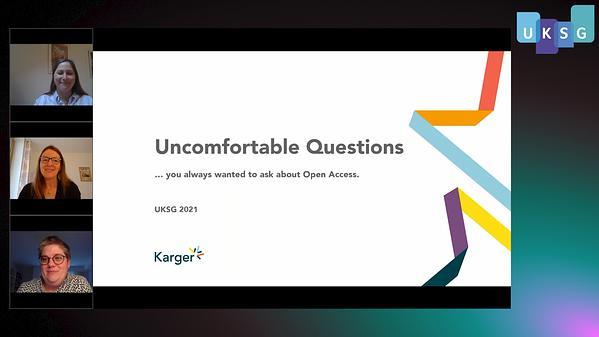Would you like to see your presentation here, made available to a global audience of researchers?
Add your own presentation or have us affordably record your next conference.
keywords:
editorial and peer review process
diversity and inclusion
open science
Objective This study measured diversity in scholarly
journals’ editors and editorial boards and evaluated
associations between editor and board diversity and journal
policies toward open access and open science. This study
extends the literature on international diversity in editorial
leadership positions 1,2 to a large multidisciplinary corpus of
journals.
Design Multiple data sources were integrated to assemble a
novel database describing the composition of editors and
editorial boards, building on Pacher et al, 3 which used web
mining to harvest editor-level information. These data were
cleaned, coded, and supplemented with journal-level
classifications of journal discipline and journal policies
derived from the 2018 Australian national research
evaluation, Directory of Open Access Journals (DOAJ), and
Center for Open Science TOPS initiative (TOPS). This
dataset, collected in February 2021, comprised 17 publishers,
6090 journals, and 478,563 named editor roles. Diversity
measures were computed for 14,228 journal editorial boards.
Editor gender was imputed from editor names by comparison
with Social Security Administration, Census, and social media
corpora. Editor country was determined by applying
geoentity extraction and gazetteer lookup of organizational
affiliation. Because chief editorship is often limited to a single
post, diversity was measured across the pool of chief editors
within that category. Boards were stratified by type (review,
editor, chief) based on each journal’s labeling of the board
member’s specific role. Journal policies were classified by
access policy (ie, open or closed) based on whether the
journal met DOAJ criteria (this corresponds approximately to
gold and diamond open access categories) and by the
presence of an open-science policy (applying the TOPS
criteria). Means were calculated with bootstrapped 95% CIs.
Results The grand mean across board types was 28.7% for
women representation and 69.7% for international diversity,
as measured with the Herfindahl-Hirschman Index. There
was substantial variation across disciplines: women
composition of editorial boards ranged from 26% in
engineering journals to 53% in education journals. Figure 3
shows mean diversity by board type. Women composition of
open access journal editorial boards was lower than that of
closed-access journal editorial boards (−7%); in journals with
open science policy vs those without (−4%), and in journals
that were both open access and had an open science policy vs
those without either (−6%). In contrast, open-access journal
editorial boards were associated with higher international
diversity (>11%) compared with closed-access journal boards.
Furthermore, editorial boards were, on average,
disproportionately male and USA-centric or UK-centric,
although the specific level of diversity varied substantially by
discipline.

Conclusions In this cross-sectional study of gender balance
and international diversity in editorial boards, open-access
journals were associated with lower women representation
and more international diversity than their closed-access
counterparts
.
References
1, Bhaumik S, Jagnoor J. Diversity in the editorial boards of
global health journals. BMJ Global Health. 2019;4:e001909.
doi:10.1136/bmjgh-2019-001909
2. Wu D, Lu X, Li J, Li J. Does the institutional
diversity of editorial boards increase journal quality? the case
economics field. Scientometrics. 2020;124:1579-1597.
doi:10.1007/ s11192-020-03505-6
3. Pacher A, Heck T, Schoch K. Open editors: a dataset
of scholarly journals’ editorial board positions. SocArXiv.
Preprint published online March 10, 2021. Updated October
2, 2021. doi:10.31235/osf.io/jvzq7 1 MIT Libraries, Massachusetts Institute of Technology,
Cambridge, MA, USA, escience@mit.edu; 2 Department of
Sociology, University of Maryland, College Park, MD, USA
Conflict of Interest Disclosures None reported.
Funding/Support Supported in part by the Institute of Museum
and Library Services, grant LG-250130-OLS-21.


